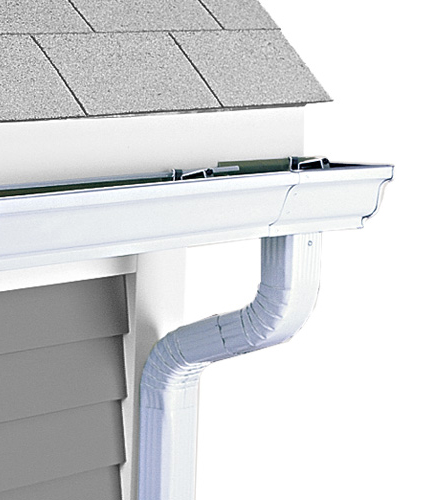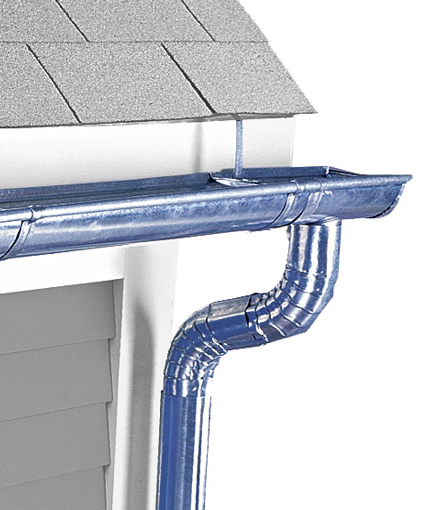ABOUT RAIN GUTTERS
Your choice: half-round or ogee
The two most common gutter profiles are half-round and the so-called K-style, which comes with an ogee profile. Contractors who produce seamless gutters with on-site forming machines are most likely to offer the K-style. Half-round gutters are available in lengths of 10 feet and up and assembled on-site. They can be ordered or bought locally in several materials.
Inexpensive aluminum or PVC gutters can look tacky on a well-designed house with handsome exterior trim. Since attractive alternatives like copper are so expensive, omitting gutters entirely may be tempting in some situations. If that’s the case, installing a perimeter ground gutter around the house topped with gravel may be an alternative for controlling runoff.
ABOUT TYPES OF GUTTERS
Look for something that will last
Size and cosmetic considerations aside, the chief question is what material to choose. Choices involve durability, cost, aesthetic, and environmental trade-offs. Materials that can be recycled easily are preferable.
Wood
An earth-friendly material, but wood gutters will need more maintenance than other materials and may not last as long as plastic or metal. High-quality cedar, redwood, and Douglas fir are expensive and getting harder to find.
Aluminum
Easy to recycle and can be formed into seamless lengths that don’t leak. Aluminum also is corrosion resistant. Limited style choices are one drawback.
Steel
Strong and dent resistant. For rust protection, steel gutters can be galvanized with zinc, coated with Galvalume (zinc and aluminum), or terne (tin and lead). Simple galvanized gutters are relatively inexpensive and long-wearing, and can be recycled.

This article is only available to GBA Prime Members
Sign up for a free trial and get instant access to this article as well as GBA’s complete library of premium articles and construction details.
Start Free TrialAlready a member? Log in












0 Comments
Log in or become a member to post a comment.
Sign up Log in